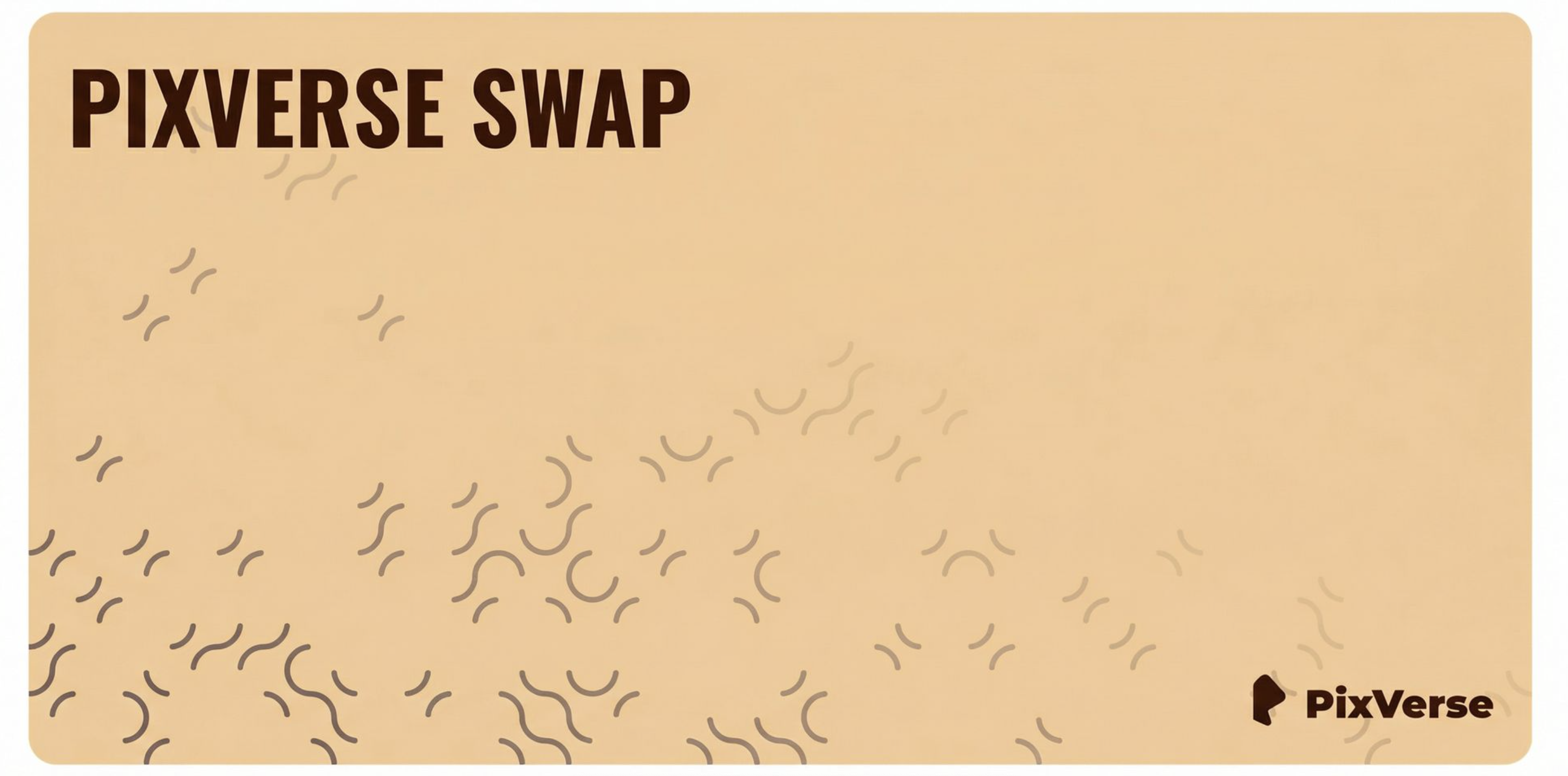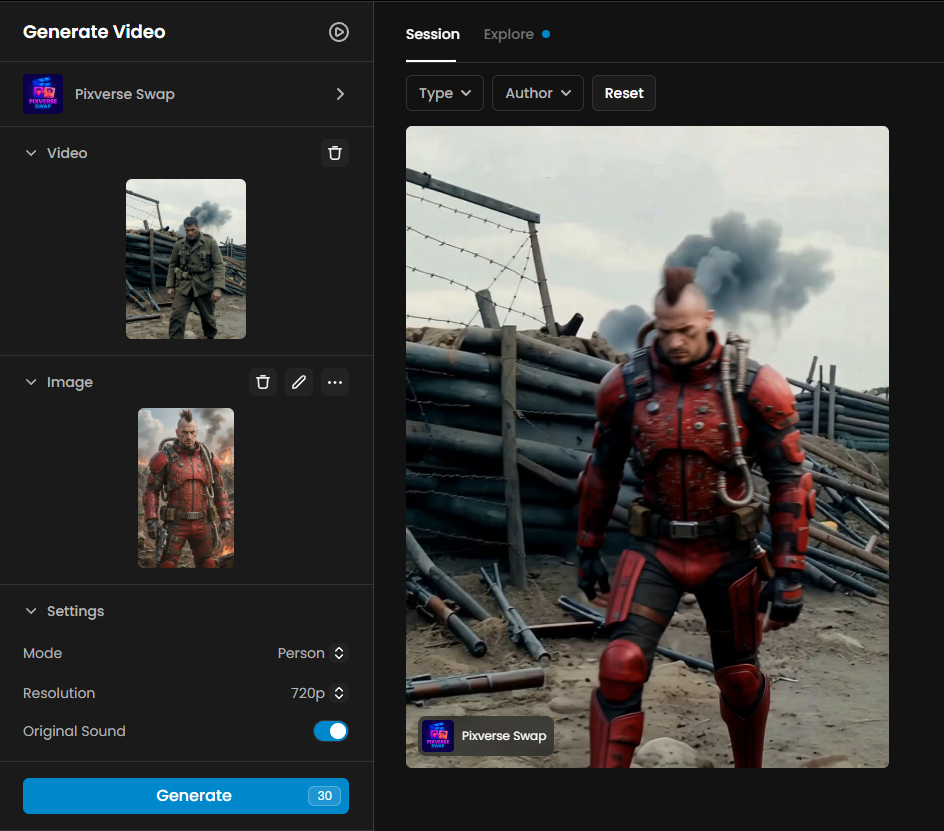
Introduction
Pixverse Swap is a powerful video-to-video transformation model integrated into Scenario that enables users to replace characters, or backgrounds within existing video clips using a single image reference. The model intelligently transfers the new visual identity across all frames, maintaining motion consistency, lighting, and perspective from the source footage.
Designed for creators, filmmakers, and designers, Pixverse Swap simplifies complex compositing workflows by automating character or scene replacement directly within the video. Instead of relying on traditional post-production tools, users can achieve seamless cinematic transformations in just a few steps, making it ideal for storytelling, prototyping, and visual experimentation.
Core Features
1. Element Replacement
Pixverse Swap offers two distinct swap modes, designed for different creative contexts:
Person Mode – Replaces the primary human subject in a video while maintaining body movement, facial orientation, and clothing dynamics. Ideal for cinematic reskins, actor swaps, or character design previews.
Background Mode – Transforms the entire environment of a clip, retaining lighting and motion but replacing scenery or setting.
Each mode leverages advanced diffusion-based video synthesis, ensuring spatial consistency and natural motion transitions.
2. Resolution and Sound Options
Videos can be generated at 360p, 540p, or 720p, with the option to preserve original audio, allowing creators to maintain dialogue, music, or ambient sound.
This makes Pixverse Swap not just a visual generator, but also a post-production enhancement tool for short films, trailers, or concept animation sequences.
3. Integrated Workflow in Scenario
Scenario’s integration of Pixverse Swap provides a streamlined interface:
Input: Upload or import a video from your library.
Reference: Add an image that defines the new subject or style.
Adjust Settings: Choose the swap mode, resolution, and audio options.
Generate: The platform processes the transformation, outputting a consistent and coherent edited clip.
Because it’s fully embedded in Scenario, users can directly chain Pixverse Swap with other models like Qwen Edit – Camera Control or Seedance Pro for camera movements, zooms, or continuity in storytelling.
Use Cases
Character Reimagination – Replace a live actor with a stylized hero, robot, or fantasy creature for concept art videos.
Scene Relocation – Transform backgrounds to shift time period, weather, or architecture style.
Storyboarding & Previsualization – Use quick swaps to iterate visual narratives before final production.
Example Scenarios
Example 1 – Person Swap 1

A soldier walking across a battlefield is re-rendered using a modern military reference image, seamlessly adapting armor and textures while preserving natural motion and camera shake.
Settings:
Mode: Person
Resolution: 720p
Original Sound: Yes
Example 2 – Person Swap 2
A medieval character is reinterpreted as a fantasy king using a painted reference. The model replaces the subject’s attire, armor, and face while respecting lighting and depth.
Settings:
Mode: Person
Resolution: 720p
Duration: 5s
Note: The character’s mouth movement is not transferred during the swap, but this can be easily corrected using a lipsync model such as SYNC Lipsync v2 Pro, which automatically matches lip motion to the original audio.
Example 3 – Background Swap
In this example, Pixverse Swap is used in Background mode to replace the plain black backdrop of an animated character with a realistic interior scene. The model seamlessly integrates the new environment while preserving the character’s lighting, depth, and edge details. This demonstrates how background replacement can instantly elevate visual context — perfect for animation, storytelling, or stylized video production.
Settings:
Mode: Background
Resolution: 720p
Duration: 10s
Example 4 – Subtle Background Adjustment in the Same Scene
In this example, Pixverse Swap is again used in Background mode, but instead of replacing the entire setting, it performs a localized change within the same environment. The model enhances or alters specific scene elements — such as lighting, structure, or atmosphere — while keeping the original composition intact.
This demonstrates how the tool can be used not only for full scene swaps but also for fine-tuned background modifications, ideal for visual consistency or creative adjustments in storytelling.
Settings:
Mode: Background
Resolution: 720p
Duration: 18s
Tips for Best Results
Use clear, front-facing reference images with good lighting to ensure accurate and consistent mapping.
For person swaps, avoid occlusions like crossed arms or overlapping props, which can confuse the model.
Shorter clips (under 10 seconds) typically produce higher fidelity and temporal stability.
Applying Enhance to the final video is recommended to sharpen details and improve overall quality.
When using Pixverse Swap alongside other tools — for example, SYNC Lipsync v2 Pro — you can add lip movements to characters, making it ideal for dialogue scenes or talking-head videos.
Conclusion
The integration of Pixverse Swap into Scenario.com marks a major leap in creative video editing powered by AI. It bridges the gap between concept art and motion storytelling, letting users transform any scene with an image reference while maintaining cinematic integrity.
Whether you’re building character-driven shorts, recontextualizing visuals, or creating new narrative experiments, Pixverse Swap delivers professional-grade results directly inside Scenario’s unified generative pipeline.
Was this helpful?